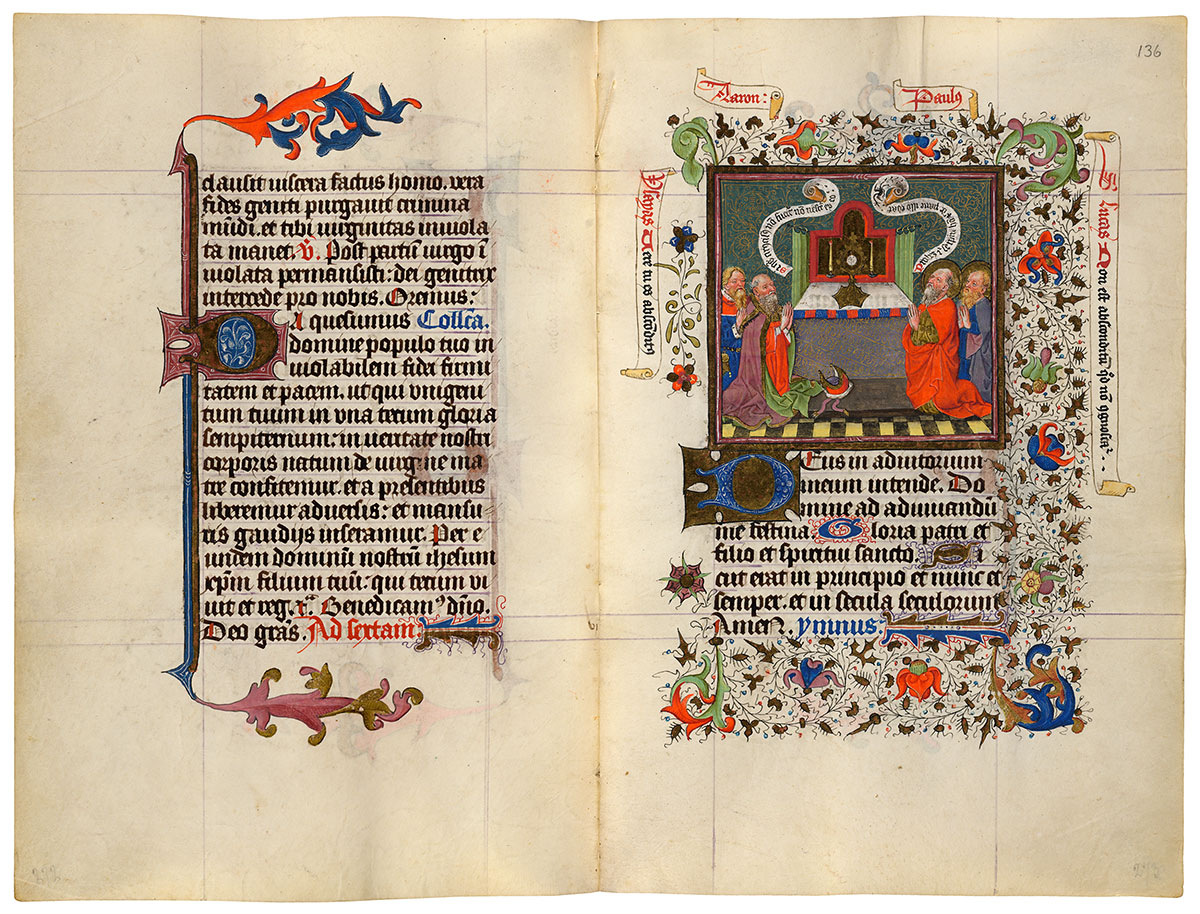
The Eucharist Adored by Prophets Aaron and Isaiah and SS. Paul and Luke
Purchased on the Belle da Costa Greene Fund with the assistance of the Fellows and with special assistance of Mrs. Frederick B. Adams, Sr., Mrs. Robert Charles, Mr. Laurens M. Hamilton, The Heineman Foundation, Mrs. Donald F. Hyde, Mrs. Jacob M. Kaplan, Mrs. John Kean, Mr. Paul Mellon, Mr. and Mrs. Charles F. Morgan, Mr. Lessing J. Rosenwald, Mr. and Mrs. August H. Schilling, Mrs. Herbert N. Straus, Mrs. Landon K. Thorne, Mrs. Alan Valentine, Mr. and Mrs. Arnold Whitridge, and Miss Julia P. Wightman, 1970
The miniatures marking the Thursday Hours of the Blessed Sacrament contain some unusually complex iconography. Text tags helped Catherine (as they help us today) identify the scenes. Here the Eucharistic wafer, mounted in a monstrance, is being worshipped by four men. The prophets Aaron and Isaiah are on the left; their scroll, quoting Exodus (12:48), tells us that no uncircumcised person shall eat of the Passover. On the right are saints Paul and Luke; their scroll, quoting the First Epistle to the Corinthians (11:28), demands that a man be worthy before partaking of the Eucharist.
Hours and Masses for the Seven Days of the Week
The most unusual texts in Catherine's manuscript are the series of Hours and Masses for every day of the week. Medieval Christian tradition associated certain figures or themes with different days. Thus Sunday, the day of the Resurrection, was the Lord's Day; Thursday was connected with the Eucharist since that sacrament was instituted on Holy Thursday; and Monday was the day of the dead, since their torments were suspended on Sunday but recommenced the following day. In Catherine's prayer book, the themes for the Hours and Masses of the seven days of the week are:
| Sunday | the Trinity |
| Monday | the Dead |
| Tuesday | the Holy Spirit |
| Wednesday | All Saints |
| Thursday | the Blessed Sacrament |
| Friday | the Compassion of God |
| Saturday | the Virgin. |
Image courtesy of Faksimile Verlag Luzern
